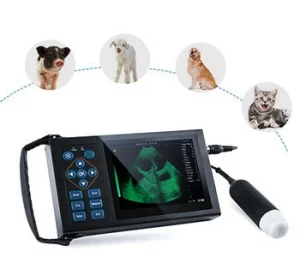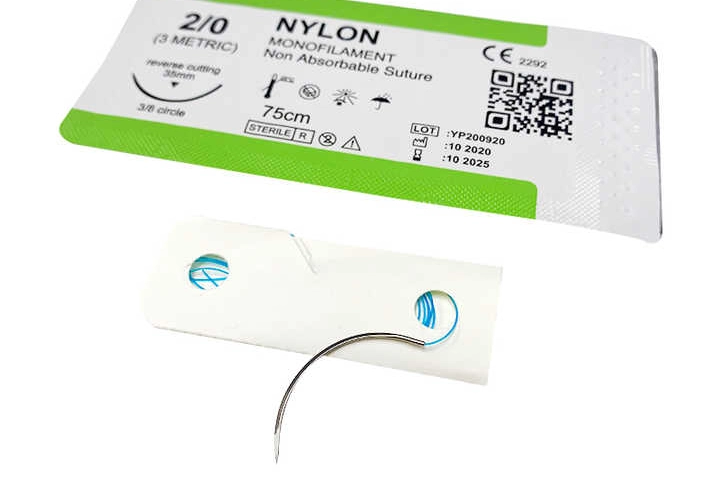
What is Ultrasound Machine
Ultrasound machines are critical modern equipment used in medical fields for diagnosis. It works by projecting frequency sound waves into the body, and capturing reflections so as to create immediate pictures of internal structures. In this way, this method contributes to the exploration of organs, tissues, and blood circulation without invasive methods. It includes a transducer that sends and receives waves a CPU and a monitor where all the real-time images come out.
Types of Ultrasound Machines
Portable Handheld Devices
A portable handheld ultrasound machine is a light weight portable ultrasound machine with a handheld device designed to be easily portable, allowing the machine to be brought to the patient and used in other settings. These instruments are especially useful in emergencies or places where conventional devices are difficult to reach. Due to their portability, they can be employed for point-of-care diagnostics. They have the advantage of being portable, which makes them suitable for use in point-of-care diagnostics.
Traditional Console Systems
They are fixed devices usually used in hospitals and diagnostic centers to deliver high-end imaging features with higher resolution and more functionality and this type of ultrasound system is best for comprehensive diagnostic evaluations requiring a clear view of internal structures. Standard console ultrasound machines are fixed machines found in hospitals and diagnostic centers It has high-level imaging technology (high resolution & multi-function of all the scanning modalities and are used in detailed diagnostic workups as the images obtained are superior in internal structures.
Key Benefits of Ultrasound Machines
Non-Invasive Diagnostic Tool
The ultrasound device gives an advantage because it is noninvasive, which means that there is no surgical yet also no radiation exposure taking place, so it is much more preferred and much safer for routine tests and for the follow-up of a chronic المرض. Uses: genetic testing A genogram or pedigree is used to visualize and examine family history; an ultrasound machine has an advantage in that it is less invasive than other diagnostic methods that might involve surgery or exposure to radiation hence it is preferred in regular check-ups or chronic disease monitoring
Real-Time Imaging Capabilities
Particularly, due to its competence to determine an image in real-time, an ultrasound device is utilized for dynamic assessments within the health sector. It allows the doctors to see the action in live mode such as in the case of blood flow in vessels, or in the case of pregnancy, the movement of fetal-माता. Not only does real-time imaging further enhance diagnostic accuracy, but it also facilitates rapid decision-making regarding medical treatments as and when necessary.
Cost-Effectiveness in Medical Procedures
Ultrasound machines are less expensive than other imaging modalities, like MRI or CT scans, but provide less exact results. They are cheaper and more affordable; hence cheaper health facilities can also afford and procure them. Moreover, their lower operational costs lead to a reduction in total healthcare costs for patients.
Applications in Human Medicine
Obstetrics and Gynecology
Prenatal Screening and Monitoring
Ultrasound machines are an essential tool in the field of obstetrics, allowing the technician to show pregnant women the baby that grows in their womb during routine prenatal care visits. Assisting the medical professionals to find out if there is any birth defect, and monitor the fetus’s growth and amniotic fluid level, during the routine examination of the mother or child, without any harm. Assist medical practitioners in detecting any birth defects and monitoring the growth of the baby on the amniotic fluid levels (risk-free for the mother or child during routine examinations)
Gynecological Examinations
Obstetricians make use of ultrasonic technology to evaluate health-related conditions such as ovarian cysts and uterine fibroids together with conditions associated with the endometrial. This complex imaging assists in diagnosis and treatment plans but, without invasive tests. This advanced imaging aids in diagnosis without invasive tests and treatment strategies Without invasive tests
Cardiology
Echocardiograms for Heart Health
Within cardiology, echocardiography is an essential ultrasound device used to assess heart function. It provides images of the heart’s structure that help to detect problems such as valve disease, heart failure, or heart defects. It also aids in understanding the effect of therapeutics, such as drugs or surgical interventions.
Vascular Assessments
Vascular tests such as ultrasound machines are used to look at blood vessels to see if there is a blockage. This application plays an important role in diagnosing patients with deep vein thrombosis (DVT), peripheral artery disease (PAD), or aneurysms. This imaging access in real-time can help accurately determine how blood flow behaves in blood vessels. This real-time imaging ability guarantees accurate quantification of hemodynamic parameters in vessels.
Veterinary Applications of Ultrasound Machines
Abdominal Scans
The workhorse machine of veterinarians getting the job done at diagnosing most conditions of small animals. One of the main uses is for abdominal scans which enable vets to view organs such as the liver, kidneys, spleen, and intestines. It is a non-invasive and safe diagnostic tool that offers comprehensive and highly sensitive imaging to allow for the detection of tumors, cysts, or blockages. An ultrasound machine can provide real-time imaging capabilities that allow for more accurate evaluations and immediate treatment planning.
Cardiac Evaluations
Use case for veterinary care: Studying the hearts of animals with ultrasound technology Echocardiography continues to revolutionize how veterinarians visualize the structure and function of an animal’s heart (ultrasound-based). It includes an assessment of valvular functioning, dimensions of the chambers of the heart, and the direction of blood flow. These high-resolution images play a crucial role in congenital anomaly diagnosis or other abnormalities like heart failure, and cardiomyopathy. For monitoring chronic cardiac issues in pets, tracking data over time is valuable.
The Role of Portable Handheld Ultrasound Devices
Advantages in Point-of-Care Settings
Portable handheld ultrasound devices are ideal in rapid access settings, such as at the patient bedside or in the field, where immediate diagnosis is critical, because they are compact, lightweight, easy to carry, and can be utilized without time loss in emergencies for rapid decision-making, at the discretion of healthcare providers.
Enhancements in Remote and Field Work
A portable handheld system has revolutionized remote and fieldwork with state-of-the-art provision of technology where conventional healthcare services are not available or rare. Perfect for tasks in rural areas or during wildlife conservation operations, and easy to transport due to their compact design. They enable vets to carry out quick animal assessments without the need to take them into the facilities. In addition, these devices motivate telemedicine programs helping imagery be shared with off-site specialists.
Medco Innovative Solutions in Ultrasound Technology
Product Range and Features
Medco offers diagnostic instruments that are specific to the needs of both medical and veterinary professionals. We have plans for handheld devices as well as normal console devices depending on the type of purpose. Features such as high-quality imaging capabilities and easy-to-use interfaces are common to each device. These features ensure Medco products provide performance for a wide range of diagnostic applications.
Advancements in Portability and Usability
Medco portable medical devices can be transported easily, without affecting their functionality. Such innovations are in sync with the increasing need for flexible diagnostics adaptable to various clinical settings. With improved usability features like touchscreens that are easy to use, presets that are user-customizable, and features for one-click operation, healthcare professionals experience a seamless workflow closer than ever. Improved usability functions including touchscreens and customizable presets further simplify workflows for clinicians.




